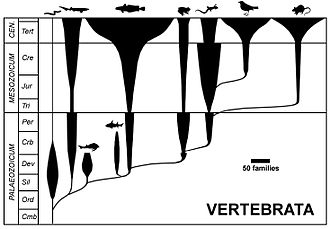Evolutionary taxonomy
Evolutionary taxonomy is a branch of biological classification that seeks to classify organisms using a combination of phylogenetic relationships and morphological similarities. This approach integrates both the evolutionary history and the physical characteristics of organisms to create a more comprehensive classification system.
History
The concept of evolutionary taxonomy emerged in the early 20th century as a response to the limitations of Linnaean taxonomy, which primarily relied on morphological characteristics without considering evolutionary relationships. The development of Darwinian theory of evolution provided a framework for understanding the relationships between different species based on common ancestry.
Principles
Evolutionary taxonomy is based on several key principles:
- Common Descent: Organisms are classified based on their shared ancestry. This principle is fundamental to phylogenetics.
- Morphological Similarity: Physical characteristics are used to group organisms. This includes both homologous structures (traits inherited from a common ancestor) and analogous structures (traits that evolved independently).
- Evolutionary Relationships: The evolutionary history of organisms is considered, often using cladistics to create a phylogenetic tree.
Methods
Evolutionary taxonomists use a variety of methods to classify organisms:
- Comparative Anatomy: Examining the physical structures of organisms to identify similarities and differences.
- Genetic Analysis: Using DNA sequencing to determine genetic relationships between species.
- Fossil Record: Studying fossils to understand the evolutionary history of organisms.
Applications
Evolutionary taxonomy is used in various fields of biology, including:
- Systematics: The study of the diversity of life and the relationships among living things.
- Paleontology: The study of ancient life through the examination of fossils.
- Ecology: Understanding the relationships between organisms and their environments.
Criticism
While evolutionary taxonomy provides a more comprehensive classification system than traditional methods, it is not without criticism. Some argue that it can be subjective, as the interpretation of morphological similarities and evolutionary relationships can vary among scientists. Additionally, the reliance on fossil records can be problematic due to the incomplete nature of the fossil record.
See Also
References
External Links
Transform your life with W8MD's budget GLP-1 injections from $125.
W8MD offers a medical weight loss program to lose weight in Philadelphia. Our physician-supervised medical weight loss provides:
- Most insurances accepted or discounted self-pay rates. We will obtain insurance prior authorizations if needed.
- Generic GLP1 weight loss injections from $125 for the starting dose.
- Also offer prescription weight loss medications including Phentermine, Qsymia, Diethylpropion, Contrave etc.
NYC weight loss doctor appointments
Start your NYC weight loss journey today at our NYC medical weight loss and Philadelphia medical weight loss clinics.
- Call 718-946-5500 to lose weight in NYC or for medical weight loss in Philadelphia 215-676-2334.
- Tags:NYC medical weight loss, Philadelphia lose weight Zepbound NYC, Budget GLP1 weight loss injections, Wegovy Philadelphia, Wegovy NYC, Philadelphia medical weight loss, Brookly weight loss and Wegovy NYC
|
WikiMD's Wellness Encyclopedia |
| Let Food Be Thy Medicine Medicine Thy Food - Hippocrates |
Medical Disclaimer: WikiMD is not a substitute for professional medical advice. The information on WikiMD is provided as an information resource only, may be incorrect, outdated or misleading, and is not to be used or relied on for any diagnostic or treatment purposes. Please consult your health care provider before making any healthcare decisions or for guidance about a specific medical condition. WikiMD expressly disclaims responsibility, and shall have no liability, for any damages, loss, injury, or liability whatsoever suffered as a result of your reliance on the information contained in this site. By visiting this site you agree to the foregoing terms and conditions, which may from time to time be changed or supplemented by WikiMD. If you do not agree to the foregoing terms and conditions, you should not enter or use this site. See full disclaimer.
Credits:Most images are courtesy of Wikimedia commons, and templates, categories Wikipedia, licensed under CC BY SA or similar.
Contributors: Prab R. Tumpati, MD




